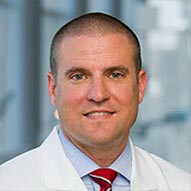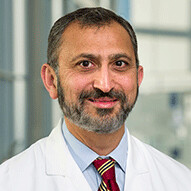Pediatric laparoscopic surgery
Laparoscopic surgery is a minimally invasive technique that is commonly used for many kinds of abdominal and pelvic conditions.
At Children's Health℠, we perform the most complex and the highest number of pediatric minimally invasive surgeries in North Texas. This extensive experience enables us to deliver the best possible outcomes for children of all ages. The UT Southwestern pediatric surgeons who practice here are trained in the most advanced minimally invasive techniques and technologies. That means your child will receive the same outstanding care no matter which surgeon performs their procedure.
What is pediatric laparoscopic surgery?
Laparoscopic surgery can be used to treat conditions affecting any abdominal or pelvic organ, including the stomach, gallbladder, liver, intestines, appendix, colon, kidney, spleen and ovaries.
During laparoscopic surgery, surgeons create a few tiny incisions that are less than ¼ inch long. These incisions are much smaller than the ones that are needed for traditional open surgery. Carbon dioxide gas is then gently injected into your child’s abdomen to lift the abdominal wall and create space for the surgeon to perform the procedure. A small video camera is then inserted into your child’s abdomen, usually at the belly button. This camera guides surgeons during the procedure. Then, the surgeon inserts special instruments through the tiny incisions to perform the procedure.
What are the benefits of pediatric laparoscopic surgery?
Like other minimally invasive techniques, laparoscopic surgery offers your child many benefits compared to traditional open procedures, including:
Quick recovery - Children who undergo laparoscopic surgery have a shorter hospital stay and can return to school and their typical activities faster.
Less pain - Because surgeons use very small incisions, children have less pain as they recover. They also need fewer pain medications, like opioids.
Minimal-to-no scarring - The small incisions result in very little scarring, if any.
What are the side effects of pediatric laparoscopic surgery?
Despite being minimally invasive, it’s possible to develop scar tissue internally after laparoscopic surgery. Scar tissue is minimal compared to open surgery. Pediatric surgeons practicing at Children’s Health use the most advanced and gentle techniques to ensure your child has the least amount of scarring possible.
What are the risks of pediatric laparoscopic surgery?
With any surgical procedure, there is a very small risk of bleeding or infection. During minimally invasive surgeries, like laparoscopic surgery, surgeons use a high-definition video camera to keep the risk of bleeding to an absolute minimum. Because the incisions are much smaller in minimally invasive procedures compared to open procedures, there is a lower risk of infection.
Pediatric surgeons practicing at Children’s Health perform more minimally invasive procedures than any other team in the region. This experience enables us to keep any risks as low as possible.
What to expect with pediatric laparoscopic surgery
What to expect before, during and after the laparoscopic surgery varies based on what your child is having surgery for. Your surgeon will explain the procedure and provide you with any preparation instructions your child needs.
In general, you can expect that your child will have a shorter length of stay and faster recovery compared to open surgery. Many children who undergo laparoscopic surgery spend only one or two nights in the hospital.
You can also expect to have child life specialists available for any surgical procedure. These specialists help children understand their condition and the procedure so they feel as comfortable as possible with surgical treatment.
What questions should I ask my provider about pediatric laparoscopic surgery?
What medications should my child stop taking before the procedure?
Will my child need to spend the night at the hospital after laparoscopic surgery?
How soon will I be able to see my child after the procedure?
Is a child life specialist available before my child has laparoscopic surgery?
Pediatric laparoscopic surgery doctors and providers
 Dai Chung, MDPediatric Surgeon
Dai Chung, MDPediatric Surgeon Adam Alder, MDPediatric Surgeon
Adam Alder, MDPediatric Surgeon Nathalie Brewer, MDPediatric Surgeon
Nathalie Brewer, MDPediatric Surgeon Natasha Corbitt, MDPediatric Surgeon
Natasha Corbitt, MDPediatric Surgeon Diana Diesen, MDPediatric Surgeon
Diana Diesen, MDPediatric Surgeon Lauren Gillory, MDPediatric Surgeon
Lauren Gillory, MDPediatric Surgeon Stephen Megison, MDPediatric Surgeon
Stephen Megison, MDPediatric Surgeon Joseph Murphy, MDPediatric Surgeon
Joseph Murphy, MDPediatric Surgeon Samir Pandya, MDPediatric Surgeon
Samir Pandya, MDPediatric Surgeon Faisal Qureshi, MDPediatric Surgeon
Faisal Qureshi, MDPediatric Surgeon Mark Ryan, MDPediatric Surgeon
Mark Ryan, MDPediatric Surgeon